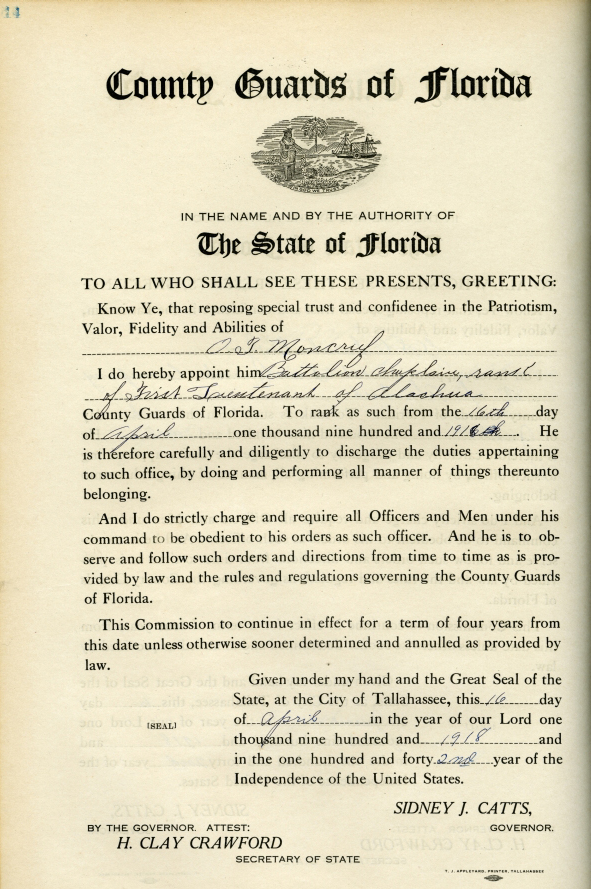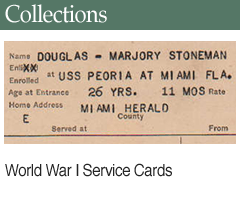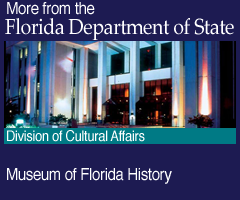County Guard Commissions, 1917-1919
About These Documents
This collection consists of commissions issued to officers of County Guard units in Florida during World War I. The County Guards were authorized by the Legislature in 1917 to replace the Florida National Guard, which had been called up for service in the regular United States military. Each certificate provides the name of the officer being commissioned, the county in which he was to serve, his rank and the date of his commission. The collection serves as both a useful genealogical resource and a tool for researching one of Florida's less-remembered military institutions.
Note: Not all counties participated in the program. See Browse By County

Background:
The United States officially entered the First World War in April 1917. At that time, the Florida National Guard consisted of two infantry regiments, both of which were summoned for national service. Approximately 2,000 Florida guardsmen were included in these units. Troops from the First Florida Infantry were divided among several new national units, while soldiers from the larger Second Florida Infantry were assigned to the 31st "Dixie" Division. These soldiers spent much of the war in Georgia assisting with the training and transportation of other units. Of the Florida guardsmen who were assigned to other units, about 150 were killed or wounded in action, while another 100 died from accidents or disease.
With the Florida guardsmen headed for national service, Florida's leaders realized they would need some sort of replacement force to ensure good order and safety at home. On May 21, 1917, Governor Sidney Johnston Catts signed an act (Chapter 7292) authorizing each Florida county to establish its own County Guard units. Membership was restricted to white males between the ages of 18 and 65, and the units were to be organized using the same system of discipline as the Florida National Guard. Each unit's officers were to be selected by the members. Sheriffs and circuit court judges were authorized to activate the units for the purpose of "preventing or suppressing insurrection or threatened insurrection, and also for the purpose of preventing or suppressing an actual or threatened riot, mob, unlawful assembly, breach of the peace, or resistance to or violation of the laws of the United States or of the State of Florida," etc.
Contemporary observers admitted that the chance of the County Guards seeing much action was slim, but Floridians prided themselves on being well prepared. The St. Augustine Record explained, for example, that while no trouble was expected, the very presence of a County Guard would be a guarantee against any attempt at lawlessness. These predictions were generally correct, as history only records two cases where the County Guards were called out for serious duty. In 1917, a detachment of 150 Duval County Guards helped transport a group of defendants in a bank mismanagement case from Live Oak to Madison for their trial. Local officials had feared violence might break out, but with the Duval County Guards on hand the transfer took place without incident. In the second case, a single officer mediated a phosphate workers’ strike in Mulberry (Polk County) in August 1919. The strike ended peacefully without any further action.
The County Guards were disbanded following the end of World War I, as prescribed by law. Some companies continued to serve their communities in an auxiliary capacity into the 1920s, while members of other companies joined the Florida National Guard once it was reorganized.
Although Florida’s County Guard units were never called on to respond to a major disaster or civic disturbance, they were a source of pride for their home communities and served as leaders in the maintenance of morale and patriotism. Newspaper reports show that Guard units across the state held military balls, played baseball, marched in parades, and even made up a few songs and poems about their experiences.

 Listen: The Gospel Program
Listen: The Gospel Program


